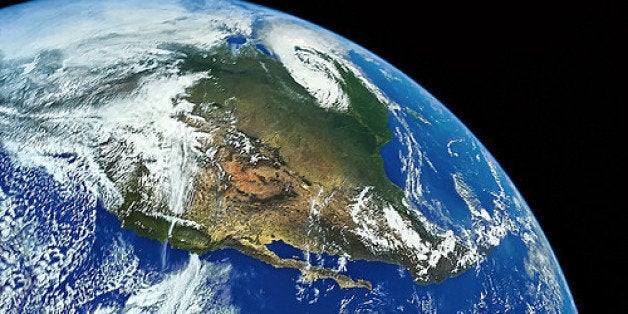
This week, the United Nations unveiled 17 goals-- and 168 targets - that comprise the Sustainable Development Goals (SDGs). The idea of specific goals for organizing action around pressing challenges is critical. But just as important is how these challenges interconnect. By leveraging those points of connection, we can make smarter investments with limited resources to create outsized impact.
A smart place to start: The connections between human health and planet. From the pollution of our air and water, to the increase in extreme weather events due to climate change, to a deterioration in biodiversity and natural systems, we are seeing dangerous trends that pose severe implications for human health. The impacts will be both changing patterns of known disease, and an increased likelihood that new, yet unknown diseases will emerge and spread in unforeseen ways.
To respond to these realities and ensure that, collectively, the SDGs have a strong chance of success, we need a new operating system for health and the planet - public health 2.0., or what is being called "planetary health." Over the last year, the Rockefeller Foundation-Lancet Commission on Planetary Health has investigated the challenges in safeguarding health in this era of unprecedented loss of biodiversity, climate change, and human impacts on our environment. From their findings, we believe the following actions must be taken if we're going to not only achieve the SDGs, but ensure our planet for the long-term.
For each goal, make explicit the connections to health and planet. As the SDGs seek to tackle issues like access to energy and quality education, the global community will be hamstrung if we are also fending off new and virulent threats - think of the development progress brought to a halt by Ebola. We must look at the deeper connections to natural systems that can be made in support of every single goal. For example, if we want to achieve our goals for clean water access or food security, we cannot ignore the contributions of our natural systems: while 2 billion more people now have access safe drinking water, thanks in good part to the Millennium Development Goals, about 173 million still rely on drinking water from rivers, streams, and ponds, which are increasingly tainted with bacteria, or due to changing climate patterns, simply aren't being replenished. This depletion also jeopardizes the production of crop yields of maize, soybean, wheat, rice - all of which has implications for human health. If we are to meet goals targeted at agriculture, food security, and nutrition, we must account for the role of our natural systems and their impact on health.
Train practitioners for all goals with a planetary health mindset. A recent review by the Secretariat for the Convention on Biological Diversity and the World Health Organization shows many knowledge gaps among policymakers and public health practitioners regarding the links between human health and ecosystems, and indeed, our Planetary Health Commission identified knowledge failures as one of the three challenges to achieving planetary health. To overcome this hurdle, we must unite research disciplines across natural and social sciences. Similarly, we need to ensure that the health care workers who daily confront diseases like malaria, which are heavily responsive to changes in the nearby environment, are well connected to policymakers focused on environmental degradation - and vice versa. The training of health care workers - or the need for resilient health systems - cannot be siloed underneath one goal - it's critical to the success of each.
Find new and better ways to finance development. We already know that the SDGs will cost an estimated $2.5 trillion a year in developing countries alone. Yet governments and philanthropies only have billions available. And so to address the interplays between the goals, we must be developing more innovative financing mechanisms that can unleash more capital to multiple issues at once.
The SDGs and deadlines for action are critical. But in working to achieve the specific targets of each goal, we must not lose sight of the long game that each goal contributes to - the vitality of our planet. Investments in ending poverty, achieving gender equality and ending hunger will be wasted if we don't secure our planetary safety net.
And if we wait to focus on planet until after the SDGs sunset in 2030, it will be much too late.